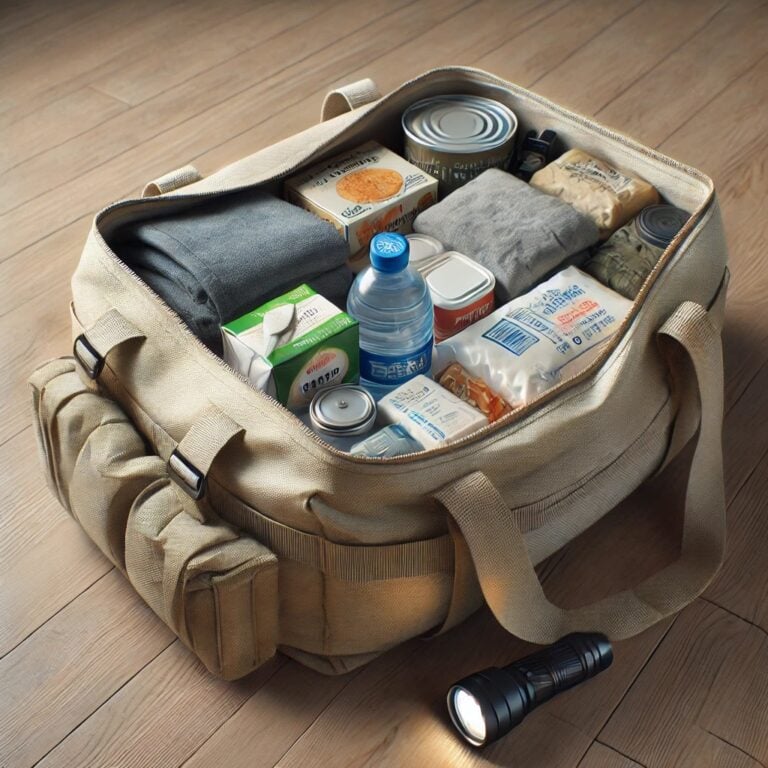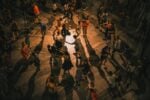
A Bosai Bag, or “disaster prevention bag,” is an emergency kit that can support you, your family, and your pets for up to 3-5 days. For a country like Japan, where our lives are threatened by earthquakes, typhoons, and other calamities, having a well-stocked and prepared Bosai Bag is not only desirable but essential. This kit should contain all the necessities that anyone might require before rescue operations can be made.
Why a Bosai Bag is Useful in Japan
After living in Chiba for many years, I have become more familiar with how unexpected quakes feel as that’s a normal thing to encounter here. However, in recent times, these quakes have been happening more often, and the increase in frequency has started to seem a little alarming. Last week there was a devastating earthquake in the region of Miyazaki, and in the following days, a typhoon struck. In all honesty, I did not prepare as thoroughly as I should have. The grocery stores were filled, and the most important commodities were being purchased in mere seconds, leaving my husband and I, my cat, and my rabbit scrambling to sort ourselves out as the entire country was in a state of panic.
Living in an older 2LDK rental house creates another level of concern for us as well since its foundation is no longer very sturdy, adding to that, being home alone most of the time while working remotely made me worry not only of my own security but also that of my pets, and how I would transport them, or if I had to evacuate. This experience really emphasized the need for having a ready and packed Bosai Bag—a survival kit that may suffice for individuals, families, and pets for at least 72 hours after the occurrence of a disaster.

The 10 Items That You Should Not Leave Behind When Packing Your Bosai Bag
Here are ten essential items that should be in every Bosai Bag:
1. Food and Water
The number 1 on your list for your Bosai Bag should be food and water. Ensure that you stock at least three days’ worth of preserved food supplies. Think of lightweight, energy-dense snacks such as energy bars, fruits and nuts, and instant foods. Canned goods are an option, but those tins are heavy so you may want to consider other options. Foods packed in vacuum-sealed bags are lighter than those in plastic bags or metal tins. Since water is essential, aim for at least a liter per person per day. The recent incident showed me how quickly clean water can become hard to come by. I also had water stored in the bathtub in case of electricity or water outages. Having a portable water filter or purification tablets could be very useful as well.
2. Pet Food and Water
Just like humans, pets also need enough food and water for at least three days. I ordered some additional items for the cat and rabbit from the nearest pet store. A folding bowl saves a lot of space, and it is always wise to have a spare one or two—anxious animals may eat more than they usually do during an emergency.
3. First Aid Kit
You can’t perform first aid without a first aid kit handy. Stock it with bandages, antiseptic wipes, pain-relieving tablets, and any prescribed drugs. Don’t forget to include your daily medication/ maintenance prescription as well in case of evacuation. When under pressure, it becomes difficult to think clearly, so try to add a first aid kit manual to your list. Don’t overlook a simple pet first aid kit for your furry friends and other pets you may have too.
4. Warm Clothing and Blankets
If you need to leave your house, make sure you have warm clothing. Add a small lightweight emergency blanket, spare clothes, or a lightweight sleeping bag to your Bosai Bag. Hypothermia can develop quickly in colder months, so being prepared is crucial and heat stroke can occur during the hot months, so pack items for all seasons.
5. Cell Phones, Chargers, Cables & Accessories, Backup Batteries
Being able to stay in touch with others is very important, especially during an emergency. A portable phone charger is handy, particularly if it is solar-powered, so you can recharge your phone even if there’s no electricity. Don’t leave home without spare charging cables and backup batteries. One of my main concerns was that I wouldn’t be able to call anybody. Also, include a pocket Wi-Fi device if you can for communication if the network towers go down.
6. Flashlight, Batteries, and Portable Stove
A good and strong light or lamp is a necessity, plus spare batteries. Lighting is crucial during disasters because power outages are almost guaranteed. Who wouldn’t need a good flashlight if you want to move around in your home or signal for help in an emergency? In addition, a portable stove with butane canister or butane gas canister for cooking is also a good investment as it you can use it in an outage.
7. Important Documents and Cash
You never know when you’ll need to pull out copies of your passport, insurance information, or identification—so carry them in a waterproof pouch. Water damage can destroy these crucial papers. Don’t forget cash—if ATMs are out of service, small bills will be handy. My husband insisted that we carry at least 100,000 yen in cash so that we wouldn’t be caught empty handed if ATMs were down. Also, make sure to have older coins and bills because the newer ones may not be accepted by vending machines if you need to buy water or drinks during a disaster.
8. Multi-Tool
For quick and multiple uses, a multi-tool is essential. Whether you need to clear debris, open a can, or do quick repairs, it’s incredibly handy! This was something I learned only after my first few weeks in Japan—the unexpected must always be expected. Put tools in a secure case that it is accessible to young children or pets you may have.
9. Hygiene Items
Sanitizing is not just for comfort; it’s for survival during and after a disaster. Pack small personal hygiene items such as hand sanitizer, wet wipes, deodorant, sanitary pads, a toothbrush, toothpaste, and any other sanitary necessities. A small towel can also be useful.
10. Comfort Items Who doesn’t want a little comfort in the middle of a storm or crisis? Comfort can be found in small things like a book to read, a deck of cards, or a puzzle to keep you occupied. If you have children, take a few of their toys, games, or something that calms them. Make sure to pack all necessary medications and something for them to hold onto if you have to leave the house. For my pets, I included a toy and a blanket to comfort them.
These are the Most Likely Items to Run Out of Stock at Grocery Stores
During disasters, certain essentials quickly disappear from stores. Toilet paper, bottled water, and batteries are often the first to go, along with instant noodles, bread, and rice, which are easy to store and prepare. Flashlights and canned goods become indispensable when power is out and fresh food is scarce. Wet wipes are crucial for hygiene when water is limited, and cooking fuel is essential for preparing meals without electricity. It’s wise to stock up on these items in advance to avoid the last-minute rush.

Preparing Your Home for Emergencies
Apart from ensuring your Bosai Bag is packed, preparing your home for natural disasters is also important. Another step is to determine the location of a safe zone where you can go if debris starts falling. This could be a sturdy table, a reinforced closet, or another secure area in your home. Ensure that all members of the household know where this safe zone is and are familiar with the procedure for getting there quickly.
Planning for Evacuation
Not having a clear evacuation plan during the recent earthquake and typhoon was a wake up call for me to be ready for disasters that could happen. Since I live in an older house, I always wondered how it would hold up, and being alone made it even more unnerving. I made sure to find the closest evacuation center and marked out the safest evacuation routes. But the aspect that worried me most was how I could possibly take both my cat and rabbit with me.
If you are in a similar situation, contingency planning is essential. Find out where the nearest evacuation shelter is and whether they accept pets. If they don’t, make arrangements with a friend’s house or a pet-friendly shelter. I also realized the importance of keeping a couple of carriers readily available in case we had to evacuate on short notice. Another tip: If you have tornado shutters outside your home and there’s a typhoon, lower them, but don’t make them too heavy. This helps protect your home from the disaster without creating other unnecessary risks.
Staying Informed
During these recent disasters, just knowing what was going on gave me a sense of control. I was frequently checking Reddit, news sites, Twitter, and other related sources to stay updated. I also installed an app from the Tokyo Metropolitan Government’s Bichiku website, which is very useful for knowing how to stockpile food and other essentials. Having multiple sources of information helped me avoid dangerous situations and feel more secure.
Final Thoughts
Living in Japan means accepting that nature is a powerful force, and you have to live with its unpredictability. The events in Miyazaki showed how quickly things can go from calm to chaotic. By spending time putting together your Bosai Bag and making sure you include everything your family needs, you’re not becoming a hermit preparing for the worst. Instead, you’re making sure that you and your loved ones are ready to face whatever comes.
Don’t wait until it’s too late. Don’t wait any longer for the storm to hit—start building your Bosai Bag now. It’s important to be ready for anything mother nature has to offer.















